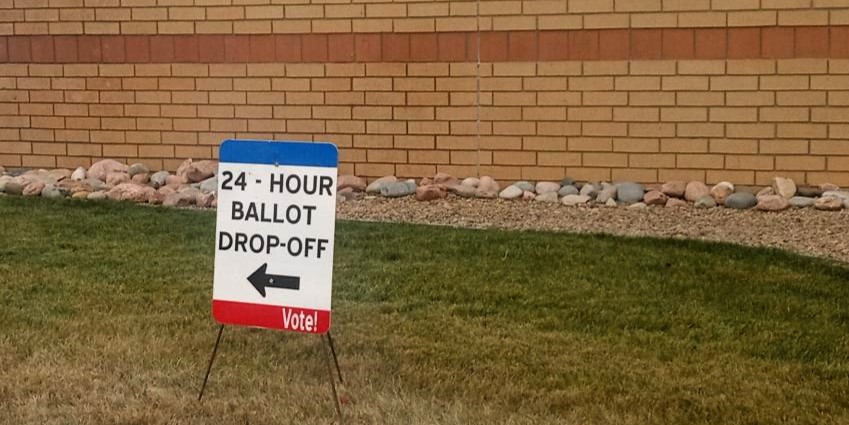Collecting Ballots
75% of Coloradans used a drop box to return their ballots in the 2022 election. Every day after ballots are first mailed out, two election employees (a registered Republican and a registered Democrat) move all the ballots into a locked transit box and (along with other transit boxes with ballots from other drop boxes) take it back to the closest election facility. Each box is logged on a chain of custody document, which the state makes public.
At the election facility, the transit boxes are marked on the chain of custody log, unlocked, and emptied. The ballots inside are stacked into smaller bundles, and a different bipartisan team of election judges verifies the ballots.
Verifying Ballots
Ballots are verified by a machine that makes sure your signature on the envelope matches your signature on file with the DMV and that the barcode of your envelope matches the barcode of the ballot mailed to you.
If either of these security measures fails (or the machine finds that you've already successfully submitted a ballot), the machine puts it in the reject tray, and the election judges personally evaluate if they can accept your ballot or not. If not, the unopened ballot is secured in a reject bin and a rejection letter is sent to you so you can cure their ballot. Ballots that are not cured within 8 days after Election Day will not be counted and will be sent to the district attorney's office for potential voter fraud investigations.
Tabulating Ballots
If your ballot passes verification (as more than 99.9% do), two election employees (again, a Republican and Democrat) will slice open your envelope, remove your ballot, and place your envelope in a "counted" stack (this, along with the machine barcode scan, is how Ballottrax knows your ballot was counted). After processing a bundle of ballots, the election workers put the ballots in a tray and write on the top or side how many ballots are in the tray. This tray is then placed in a locked cart.
After all the bundles are verified and in the locked cart, the cart is rolled to the tabulation machine, which scans and counts every ballot in each tray. Unlike the verification machine, the tabulation machine is not connected to the internet and cannot be hacked by an outside party.
If your ballot is unable to be scanned, it is removed from the stack and given to a bipartisan duplication team, who record your choices on a clean ballot that is then added to the tray and scanned (your original ballot is stamped as invalid but is not destroyed).
Once the tray is empty, if the scanned number of ballots does not match the number that was supposed to be in the tray, election judges pause the entire process to find the source of the error. If the numbers match, the next tray is scanned.
After all the scans, the results of the tabulation are saved on a brand new out-of-the-package USB drive, and that data is then loaded onto a computer connected to the state's centralized Election Night Reporting (ENR) system. At no step of this process are the results of the scan seen by human eyes to ensure there is no funny business with the count. Finally, the USB drive and all the scanned ballots are stored in a locked and logged box.
Casting Ballots at a Polling Place
Paper ballots filled out at a polling place and those mailed to the county clerk are processed in the exact same manner as the drop box ballots.
Those who use a voting machine at a polling place have their choices counted in a way similar to the tabulation machine: the machine (which is also not connected to the internet) records the results at the end of the day on a new USB, and that data is loaded into the ENR system without any person knowing the numbers.
Auditing Ballots
After the window for ballot curing is closed, each polling center audits their results by randomly selecting bundles of ballots using dice, hand counting the ballots using bipartisan teams, and then comparing their results to those logged by the machine. Any discrepancies are investigated by the Secretary of State's investigation team. If a county's audit has discrepancies in more than 3% of audited ballots or a result in that county has a margin of victory of less than 0.5%, all ballots will be recounted.
Ballots are stored in a locked county facility for 25 months after Election Day. Afterward, they are shredded and recycled. The digital files from the many, many USB drives are kept permanently.


